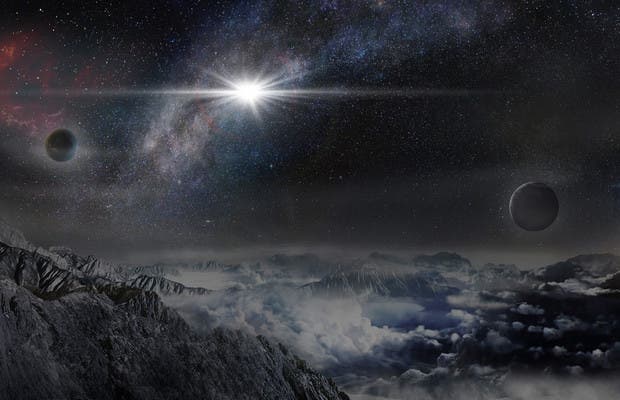The phenomenon was observed for the first time in June, but it’s still radiating massive amounts of energy, making it shine 570 billion times stronger than our Sun.

Astronomers believe that at the core of this explosion lies a magnetar – a neutron star with an extremely powerful magnetic field. The object itself is not large, being about as big as London, but it’s spinning at incredibly fast rates – in order for this effect to take place, it would have to spin at least 1000 times a second! With this, it could spur an incredibly powerful supernova.
Prof Christopher Kochanek, from The Ohio State University, US and a member of the discovery team explains how magnetars can supercharge supernovas:
“The idea is that this thing at the centre is very compact. It’s probably about the mass of our Sun, and the garbage into which it is dumping its energy is about five to six times the mass of our Sun, and expanding outwards at a rate of, let’s say, 10,000km/s.
“The trick in getting the supernova to last a long time is to keep dumping energy into this expanding garbage for as long as you can. That’s how you get maximum bang for your buck,” he said this week.
Indeed, there is a lot of bang for the buck – at its peak, the explosion was 200 times more powerful than the average supernova.
The explosion (SASSN-15lh) was spotted some 3.8 billion light-years from Earth, in a quite distant part of the Universe. The team used the All Sky Automated Survey for SuperNovae (ASAS-SN), a suite of Nikon long lenses in Cerro Tololo, Chile that sweeps the night sky for sudden explosions. Of course, it couldn’t miss one of this caliber.
“ASASSN-15lh is the most powerful supernova discovered in human history,” said study lead author Subo Dong, an astronomer and a Youth Qianren Research Professor at the Kavli Institute for Astronomy and Astrophysics (KIAA) at Peking University. “The explosion’s mechanism and power source remain shrouded in mystery because all known theories meet serious challenges in explaining the immense amount of energy ASASSN-15lh has radiated.”
In fact, it’s so big that we might actually have to rethink some of the things we thought we knew about the Universe.
“If it really is a magnetar, it’s as if nature took everything we know about magnetars and turned it up to 11,” Stanek said. (For those not familiar with the comedy, the statement basically translates to “11 on a scale of 1 to 10.”).
Thankfully, the Hubble telescope will help us answer these questions, as it will turn its eyes on the host galaxy surrounding the object. If we realize that this object lies in the center of the galaxy, then it’s a pretty clear indication that it isn’t a magnetar at all, but rather a supermassive black hole, accompanied by a never-before-seen phenomenon.






